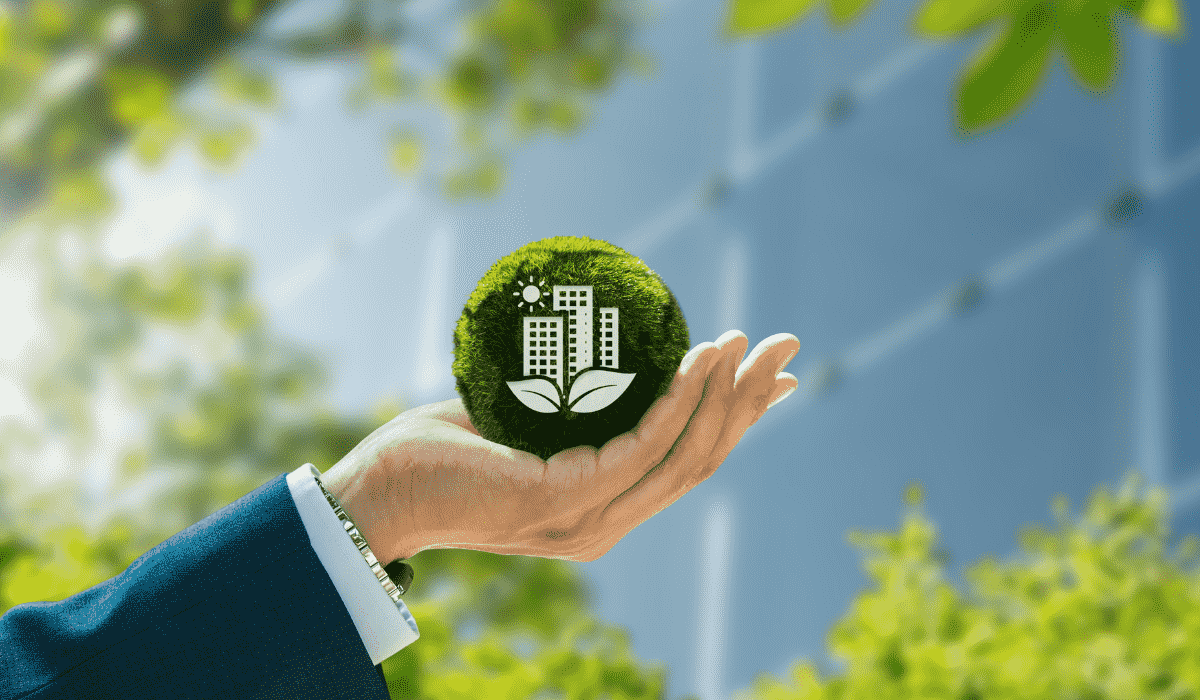An effective climate strategy requires taking a holistic approach to sustainability. The built environment (where people live and work) is a primary source of carbon dioxide emissions, making it one of the most significant contributors to greenhouse gas emissions (GHGs). As per Architecture 2030, the built environment (comprising buildings, other infrastructure, energy infrastructure and electricity infrastructure) accounts for 41% of GHGs. The number goes much higher when combined with associated activities such as transportation. Their findings also indicate that given the massive demand for building and infrastructure growth, three-quarters of the infrastructure that will exist in 2050 is yet to be built.
In a country like India, which has a population of 1.428 billion people and is expected to reach 1.7 billion by 2050, reducing the built environment’s carbon footprint and ensuring a sustainable, resilient future has its challenges. On the one side, there is the demand-supply deficit of 29-50 million homes; on the other hand, the question is, what does one do with the existing built environment to ensure a higher level of sustainability? Green construction retrofitting is a viable solution in the latter’s case. It involves transforming an existing property into a sustainable ‘green’ building by reassessing several elements such as energy, water, material use, and cost, allowing it to play a catalytic role in not only enhancing sustainability and contributing to the well-being of occupants but also help the country meet its targeted climate action goals. Over the past few decades, it has emerged as one of the preferred options to improve sustainability in existing structures.
Green retrofitting can mean looking at multiple aspects depending on the budget and the desired outcome. For example, a building owner may decide to replace outdated systems with newer technologies that are more energy efficient. In case of budgetary constraints, it could be as simple as refitting the lighting systems and replacing the older bulbs and tube lights with greener LEDs. However, in its most accurate form, green retrofitting involves assessing multiple elements that will go a long way towards enhancing sustainability.
Indoor air quality, thermal comfort, and natural lighting
These three elements play a vital role in an occupant’s health. Poor indoor air quality due to inadequate ventilation or the presence of gaseous and particulate pollutants can result in respiratory problems and lead to other health issues. In this case, green retrofitting will involve installing state-of-the-art ventilation systems and air-filtration technologies that can significantly improve indoor air quality. The latest technologies, such as air economizers, building automation systems, and demand control ventilation systems, can also be retrofitted to existing heating, ventilation, and air conditioning (HVAC) systems to drive greater energy efficiency.
Using improved insulation materials and designing energy-efficient windows will play a key role in ensuring uniform temperature conditions are maintained indoors without extreme heating or cooling. This provides better thermal comfort since extreme temperatures have a lesser impact.
Allowing more natural lighting through strategic window and skylight placement can help limit artificial lighting and increase energy efficiency, thus helping alleviate the mood and productivity level of occupants and creating a healthier environment for them.
Usage of renewable energy
With sustainability as the underlying goal of any green retrofitting initiative, renewable energy can play a pivotal role in helping achieve that goal. According to an IEA report, using solar panels to replace energy-intensive systems in buildings can help reduce energy consumption by as much as 30-50%. This has the potential to reduce utility bills and lower a building’s carbon footprint as part of broader climate goals.
Water conservation
Again, water conservation in a green retrofit can mean different things to different people. In its simplest form, it could mean replacing old taps and leaky pipes to conserve water. An ideal situation would include the implementation of low flows, rainwater harvesting systems and greywater recycling. According to a WRI report, initiatives such as these can help cut down water usage by 50 per cent or more and ensure water security in the long term.
Material reuse and recycling
Reuse and recycling of materials also play a significant role in the green retrofitting process and help reduce the carbon footprint. Reusing and using recycled materials reduces demand for new raw materials and the generation of waste while also saving resources. Besides supporting sustainability, this approach also preserves the historical and architectural value of older buildings.
While there is no doubt that the costs for a green retrofit may look expensive upfront, their long-term economic benefits far outweigh the initial investment. According to RMI research, energy-efficient retrofits may save 20-40% on energy bills with a typical payback period of 5 to 15 years. In addition to the energy bills, green retrofitting can increase property values by up to 10%, thus making the building owner’s investment economically viable.
A property owner looking at a green retrofit can also avail of grants and other incentives from the government, such as the Pradhan Mantri Awas Yojana, as well as Energy Efficiency Services Limited’s offer of monetary support for energy-efficient upgrades and retrofitting projects. The programs make it easier for building owners to undertake retrofitting, ensuring wider adoption of green retrofitting practices.
Green retrofitting existing structures for environmental and sustainable performance improvement will help the country attain its Paris Agreement commitments. Retrofitting can contribute to achieving the overall goal of cutting back on emissions of greenhouse gases and, therefore, address the significant problem of global warming since it is fundamental to improve the energy efficiency of the existing built environment. Moreover, retrofitting promotes the achievement of the United Nations Sustainable Development Goals (SDGs), especially SDG 11, which aims at enhancing the quality of life, safety, sustainability, and resilience of cities and human settlements. Whenever an existing building is made more sustainable through retrofitting, it plays a significant role in promoting better health and well-being of occupants and the city’s sustainability, which will benefit residents.
(The author is the managing director for Southeast Asia, the Middle East, GBCI, and India.)
| Got any questions or point of view on our article? We would love to hear from you. Write to our Editor-in-Chief Jhumur Ghosh at jhumur.ghosh1@housing.com |







